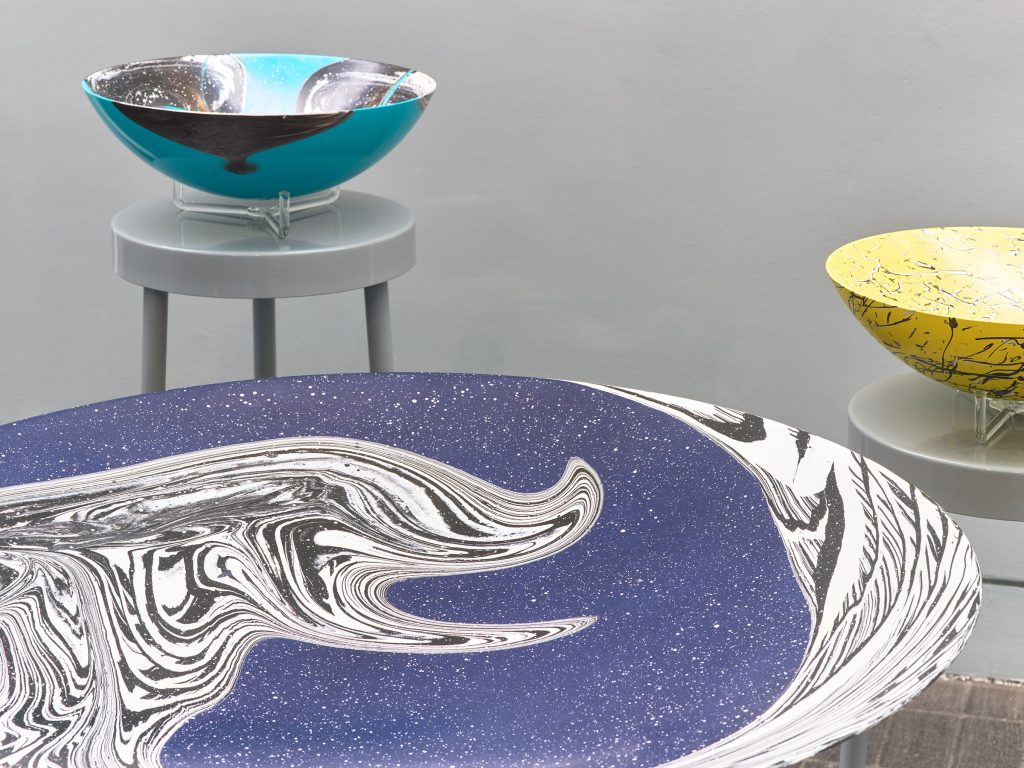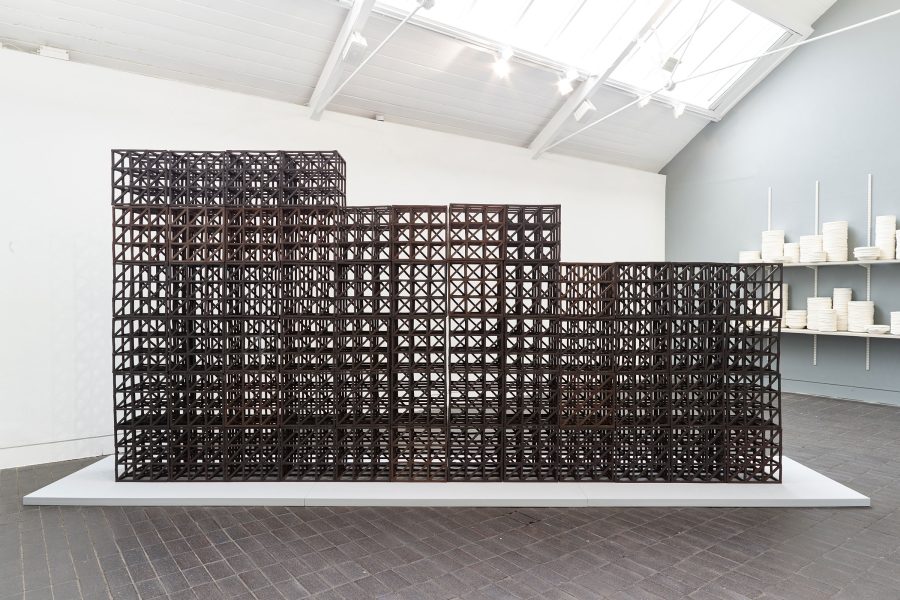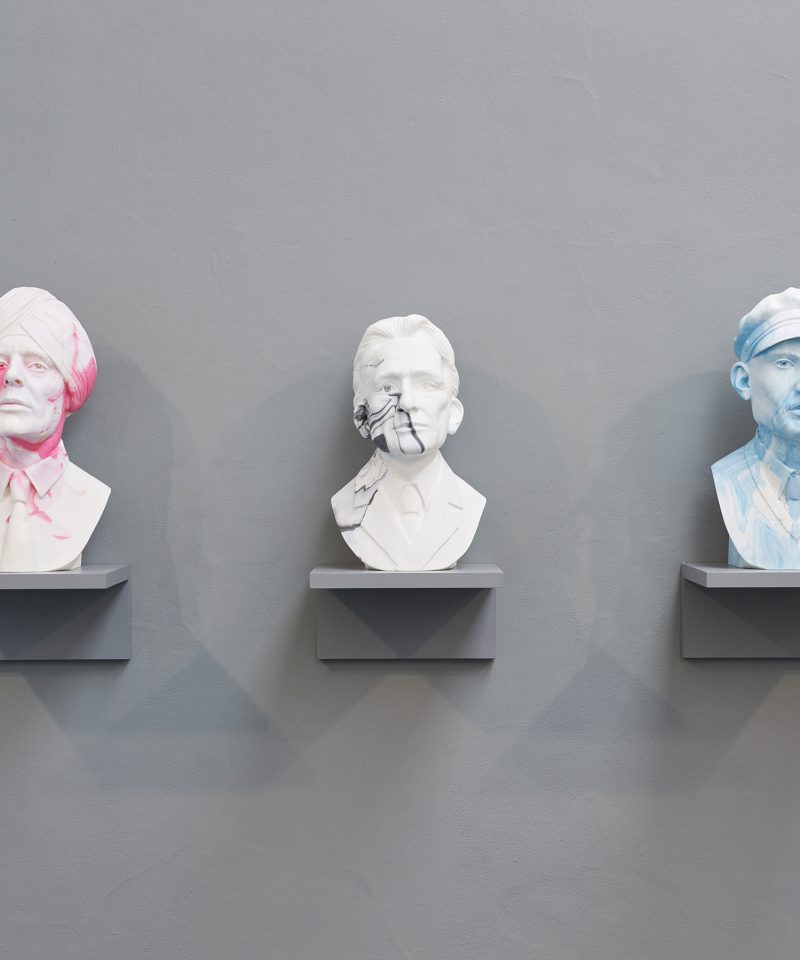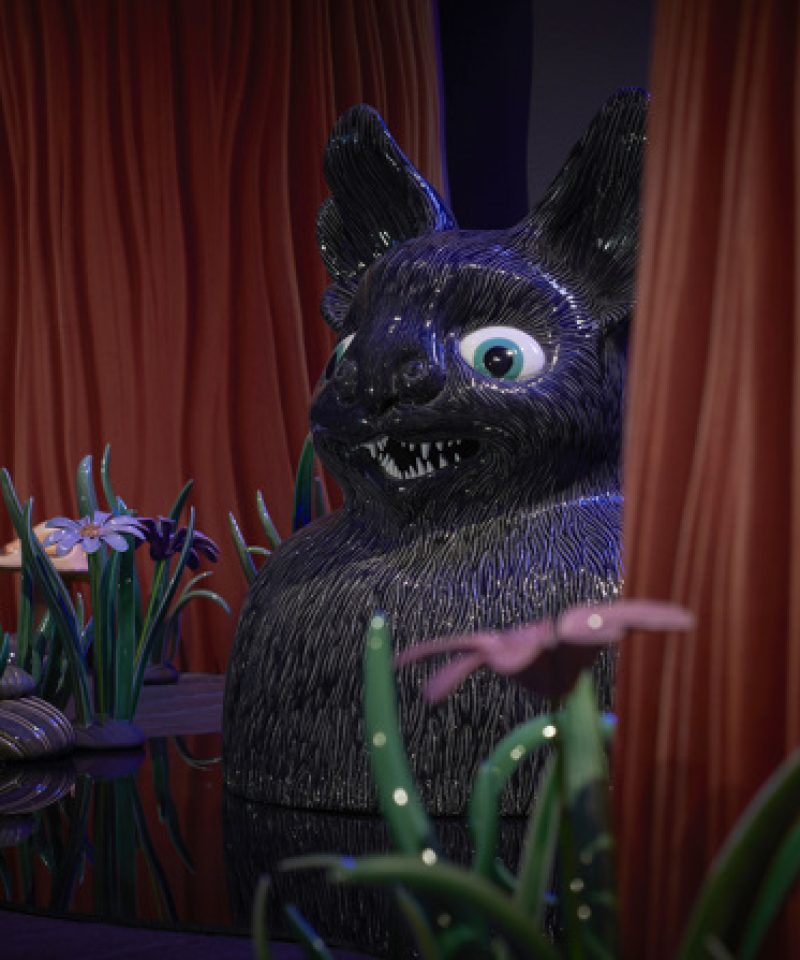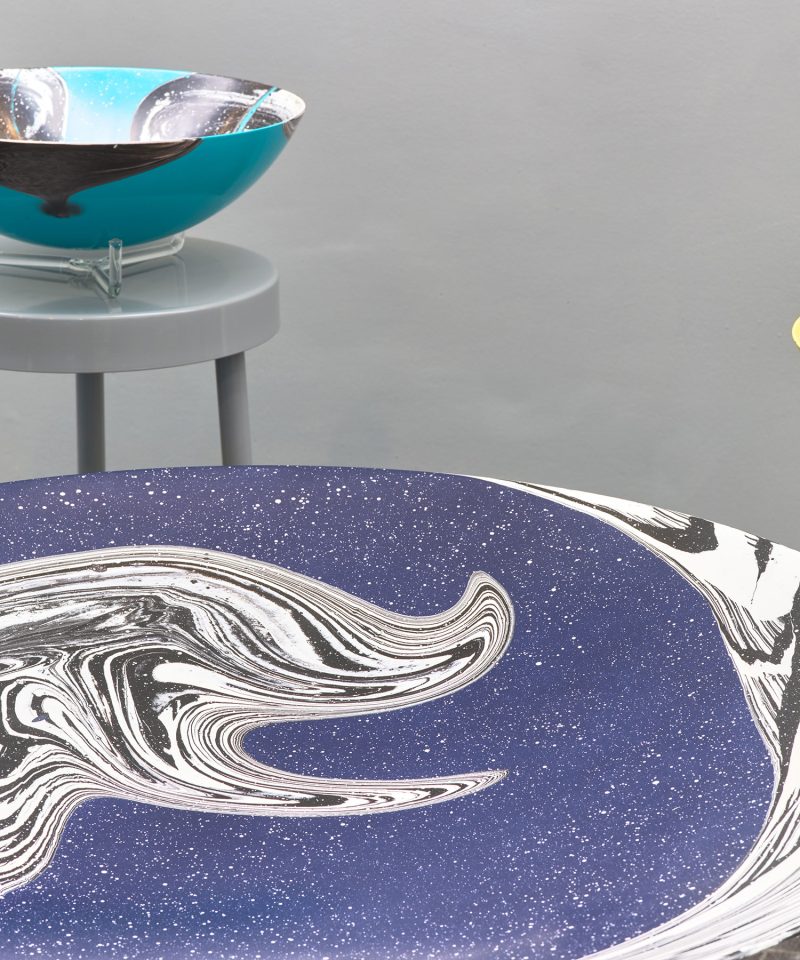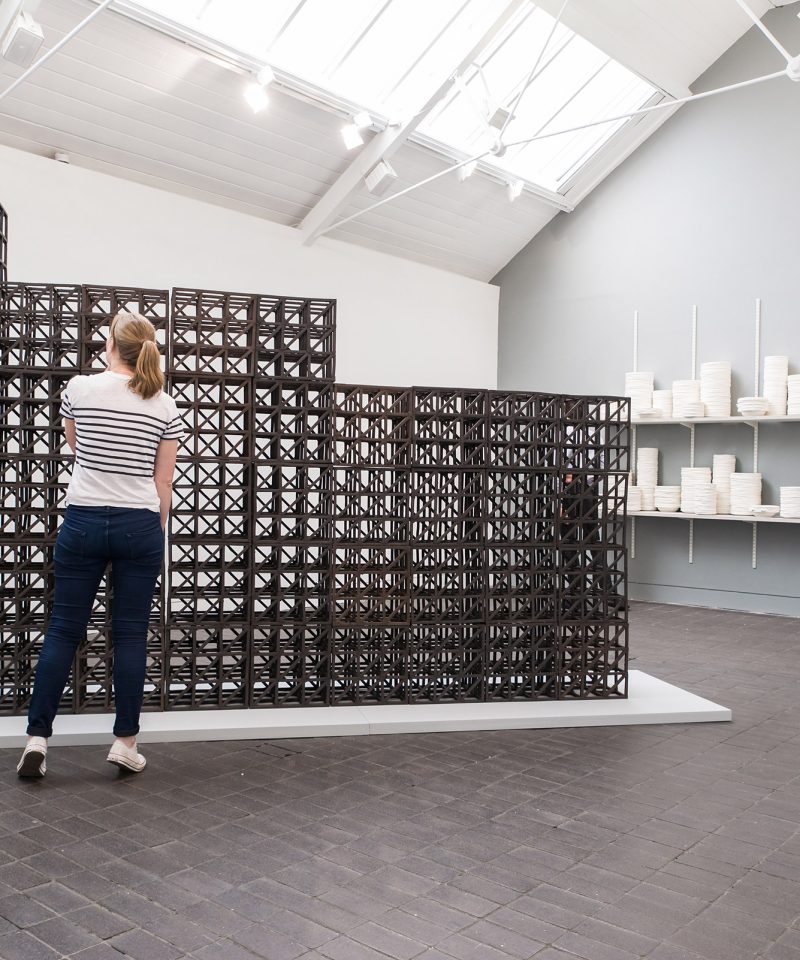Your work appears to start with an interest in subverting and confounding expectations of materials.
We start with how to challenge the use and perceptions of materials. It is very difficult not to have a preconception of how something will look when completed but we try to be as open as possible. We generally approach things in a naïve way and learn through making.
For us it is really important that the making is evident in the final piece. So, for example, when we made glass pieces with fabric moulds it was very important to us that the stitches and texture of the textiles that had formed the vessels were visible in the final objects.
Tell me a bit about the process of making and how these works came about.
We work with material, process and basic physical principles. Our research involves reading, playing with materials and watching YouTube tutorials. We were both interested in rotor moulding, a method used to make large, hollow plastic objects, tanks for example, or plastic chairs.
What is rotor moulding?
1. It is a two – or more – part mould.
2. You put powdered plastic inside, not to fill the mould, just a little.
3. Then it rotates and is heated and the plastic gets distributed and sticks to the mould.
4. When it cools you have a shiny object that pops out the mould.
It is a cheap process to use for small scale production. It was invented by Swiss Chocolate makers and is used to make Easter Eggs.
I often think about where materials come from but don’t always consider the way that processes of making develop.
All technology has a route; often it is military. Those routes are part of our research. In this instance we were looking at Liquid Mirror Zenith Telescopes, which are a cheaper alternative to conventional telescopes which use glass or polished metal as a mirror. Liquid mirror telescopes are spinning discs of liquid, low-melt alloy, often mercury. When spun the mercury makes a perfect parabola shape. You then put a lens on top and can see things that are directly above the liquid. We realised that this was rotational moulding but only on one axis.
In that instance the liquid is in continual motion; perfectly stable but never set.
Exactly, and we started looking into this and thinking about how Isaac Newton had described inertia with a theory now called ‘Newton’s Bucket’. He hung a bucket of water on a rope, twisted the rope and let the bucket spin. He described how the water remains flat at first but after a while the bucket communicates the movement to the water and the water adopts a parabola shape.
We started to experiment with rota moulding aluminium but we realised that it did not convey the movement in the making process so we started to use acrylic reinforced gypsum plaster (or Jesmonite) which enabled us to use colour to describe the motion. We poured liquid Plaster of Paris with acrylic hardener into a hemisphere shape and rotated it. We used different colours to describe the motion, for example, in the green piece, the middle part doesn’t move as much as the outer part which communicates something of the inertia principle. The bowl starts turning and the liquid has to catch up so you get a dynamic S-shaped curve.
How do you keep the colours separate?
There is an additive in the material that ensures they don’t blend. When we started with plaster this wasn’t the case. This material is much harder and the colours stay clear and clean. We polish the bowls to make them more vibrant.
Are these functional objects? What do you imagine people will use them for?
We see them in the applied arts area so you would not eat from them but they are decorative pieces to be used in people’s homes. They’re not high functional and they’re not high art. We often work in series and these pieces are between a multiple and a one-off.
The vessels sit on three-legged metal stools that reference the kitchen stool. Tell me a bit about the display of the work.
The display of our work is important to us. This is something we think should be well considered as it has a strong impact on how the pieces are perceived. Our glass blower made the glass stands so that you can see the complete object and our design studio logo on the base. The metal spinner who made the moulds for the bowls made the tops of the plinths for us and we selected the grey to match the tone of the gallery.
Do you share all of your processes in an open source way?
We don’t want people to copy what we are doing but we want to excite people to explore some of these processes and materials. In fact, that is why we avoid brand names like Jesmonite. It is important to us to use more scientific terms that better describe the materials as you can’t get branded materials across the world and we want to encourage others to make.
We encourage openness in our practice and make videos that communicate how our work is made. These act as a visual aid that helps us to communicate more quickly but also describe the tone and pace of the studio. The videos are shorthand but we also run workshops to teach people some of our methods.
